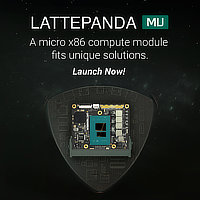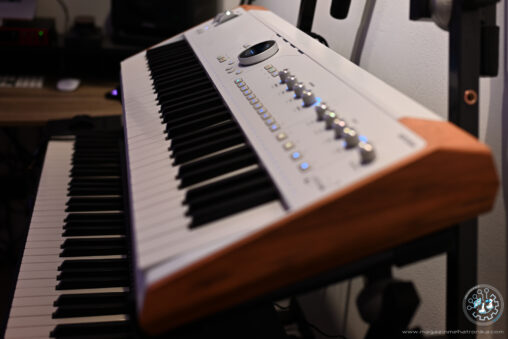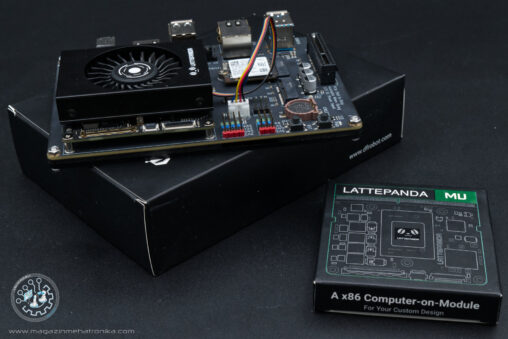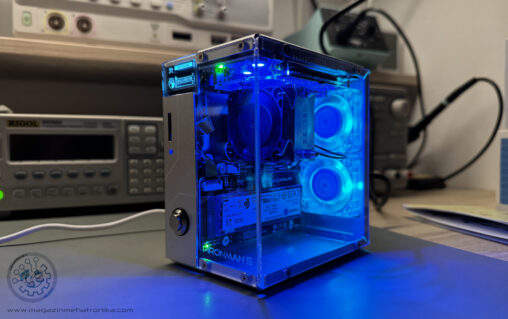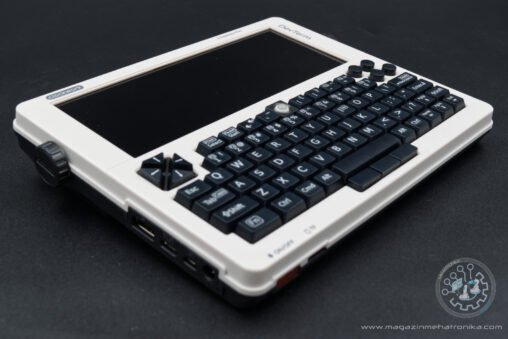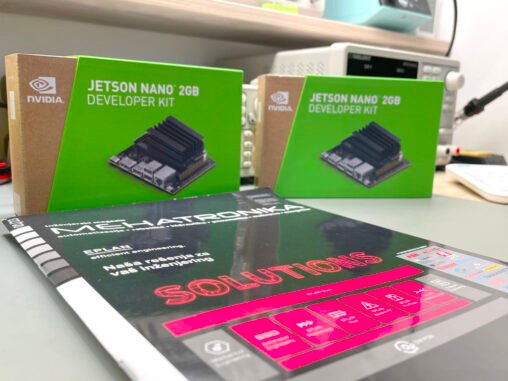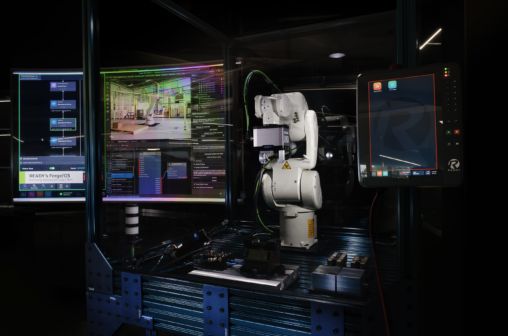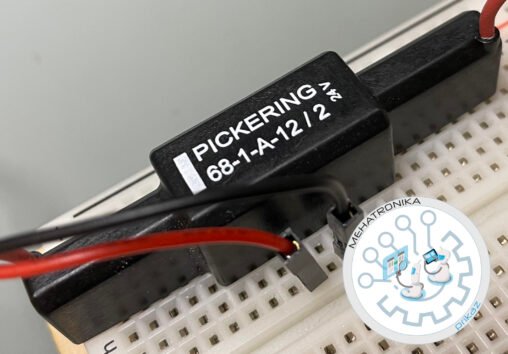Dušan DakićPage 1 of 2
Dušan has been with magazin Mehatronika since 2019, focusing on tech reviews and how-to articles, as well as handling communications with our partners worldwide.
He’s also the key person behind Mehatronika's English translations, especially of education- and maker-oriented texts.
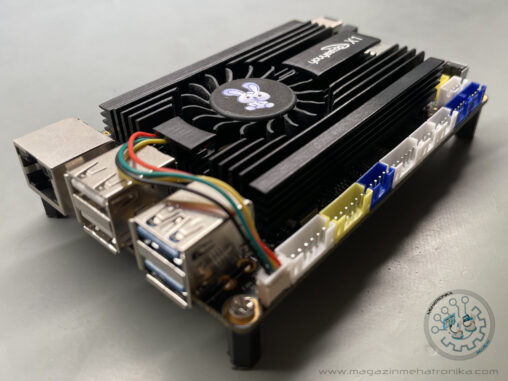
Still, the Youyeetoo X1 sits firmly as one of the (if not the) cheapest Intel-based SBCs on the market currently – and we see it as a perfect way to get a capable machine to tinker with or embed into your next project. With our only real gripe being related to the RAM implementation being only single-channel, we can comfortably, and especially for the price, recommend the Youyeetoo X1 to anyone currently looking for a general-purpose SBC.

The market is more competitive than ever, and boards powered by the RK3588 no longer have the enormous performance lead they used to, letting other systems’ strengths shine. Squashed between the Raspberry Pi’s gargantuan community and flawless software compatibility of Intel-based SBCs, RK3588 boards have to work much harder to prove themselves.
The Orange Pi 5 Plus definitely does just that, being one of the finest boards equipped with the powerful ARM SoC. Its connectivity features and video capabilities are unrivaled, and its performance is still top-notch.

Being the most powerful SBC we’ve seen so far comes at a price, though. The i5-1340P gulps down power, and requires careful planning if the system is to be embedded into a project.
Overall, the LattePanda Sigma is a major step forward for the LattePanda brand, and for SBCs as a whole. If you’ve got the means to afford it, there is really no better x86-based SBC choice on the market at the moment.
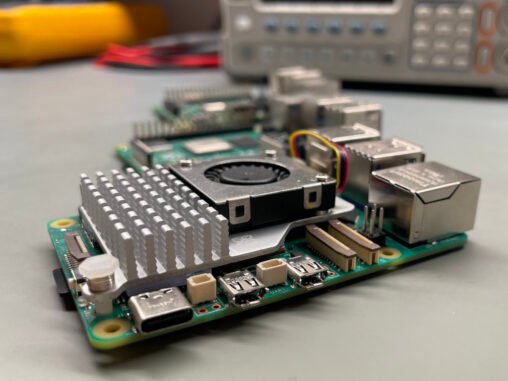
The Raspberry Pi 5 immediately outclasses its predecessors by offering a much higher 2.4 GHz base clock, which is immediately impressive. Of course, as we’ve seen in our Raspberry Pi 5 review, this comes at a cost, as the new Raspberry Pi very quickly gets quite warm during use and thus requires a robust thermal solution.
Despite this, there’s additional untapped performance in the Raspberry Pi 5. How far you can push your board is highly dependent on the silicon lottery, but looking at the early articles, the numbers we see most people cap out at are 2.8 GHz, 3.0 GHz and 3.1 GHz.
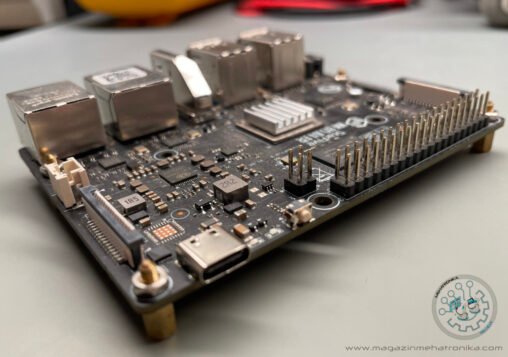
Today’s VisionFive 2 board comes from StarFive, a Chinese company closely linked to SiFive, and features StarFive’s own JH7110 SoC. It also features up to 8 GB of RAM and is touted as “the world’s first high-performance RISC-V single board computer (SBC) with an integrated GPU”. While this might seem a bit oddly specific, it’s important to remember that this isn’t StarFive’s first rodeo with SBCs. VisionFive 2’s predecessor, the aptly named VisionFive, notably lacked any sort of dedicated 3D GPU hardware. Thankfully, through a partnership with Imagination Technologies, StarFive managed to get the BXE-4-32 MC1 GPU included in the JH7110 chip.

Move over Pi 4, there’s a new slice of Pi on the block.
It’s finally happening. The successor to the popular, but aging Raspberry Pi 4 Model B is finally here – the aptly-named Raspberry Pi 5 Model B will be available to purchase by the end of October. Spending an unusually long time at the helm – four years – and receiving a significant boost in 2020 with the release of the 8 GB model, the retiring legend truly had a good run.

Magazin Mehatronika, with support from NVIDIA is giving away two Jetson Nano Developer kits.
The Jetson Nano is a small edge AI system made by NVIDIA, perfect for students, makers and educators.
Powerful enough for computer vision applications, the Jetson Nano supports external cameras, enabling powerful projects, aware of their surroundings.
Since the Jetson Nano itself is a module, with a reference carrier board in the kit, it’s possible to integrate it into custom end solutions. This level of flexibility is required for industry usage, as well as more serious projects.
More information, and the giveaway submission form can be found at the following link.

Saildrone is making a splash in autonomous oceanic monitoring.
The startup’s nautical data collection technology has tracked hurricanes up close in the North Atlantic, discovered a 3,200-foot underwater mountain in the Pacific Ocean and begun to help map the entirety of the world’s ocean floor.
Based in the San Francisco Bay Area, the company develops autonomous uncrewed surface vehicles (USVs) that carry a wide range of sensors. Its data streams are processed on NVIDIA Jetson modules for AI at the edge and are being optimized in prototypes with the NVIDIA DeepStream software development kit for intelligent video analytics.
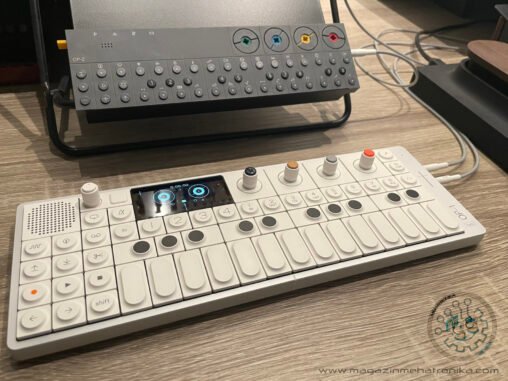
There is absolutely no doubt that teenage engineering’s OP-1 is one of, if not the most influential, synthesisers of the decade. However, as we’ve already seen multiple times with the Swedish brand’s products, trying to fit them into a single conventional category doesn’t do them justice. The OP-Z is more than just a sequencer, the TX-6 is more than just a mixer, so it only makes sense for the OP-1 to be more than just a synthesiser.
Aside from the legendary synth engines, the OP-1 features a powerful sampler, drum machine, effects processor, sequencer and virtual tape recorder, making the whole package feel much more like a DAW than a simple instrument.
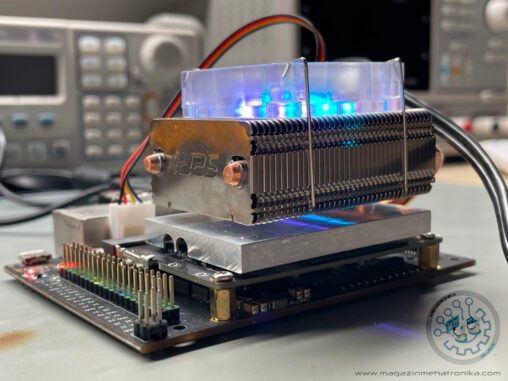
It’s no secret that NVIDIA’s AI SBCs run toasty at times. The massive stock passive heatsink is generally good enough for the job, but due to the presence of an on-board fan header on many carrier boards, it’s simple enough to install an active solution.
Still, the well-respected ICE Tower lineup of SBC cooling solutions has made its way onto the Jetson, and promises significantly better thermals than possible with passive systems thanks to high-performance desktop-like heatsinks and copper thermal pipes.
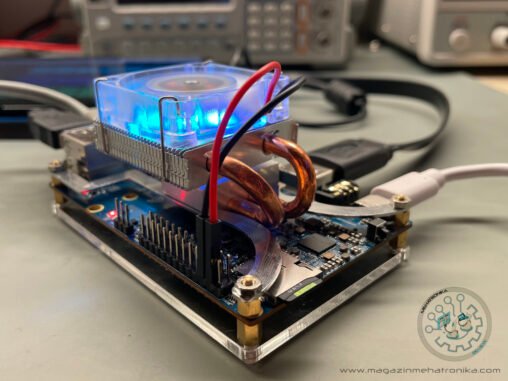
When we reviewed the awesome Orange Pi 5, we noted some minor throttling, but still suggested the use of a heatsink, at least. Despite the RK3588’s impressive abilities at minimising performance drops during intense computation, the core clocks undeniably drop as the chip approaches 90°C. Needless to say, running that hot isn’t really healthy for an SoC, either.
To solve this, the team over at 52Pi has produced a tweaked version of the ICE Tower cooler for the Orange Pi 5. Fundamentally, it’s the same idea: chunky copper heat-pipes, large heatsink and an RGB fan in a desktop-like cooling system.
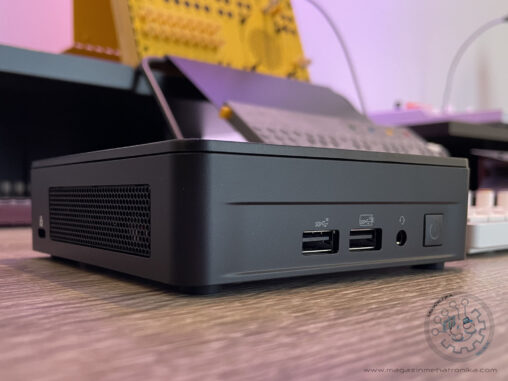
For the price, Intel truly gives a lot. A top-notch port selection, great performance, fast connectivity and great thermals grace this tiny computing box, making it capable enough to be an everyday computer. Its true strengths, however, lie in its power efficiency and expandability, making it a serious tool for computing at the edge or for smaller servers. It’s perfect for large scale deployment in education, as well as for smaller workspaces requiring dedicated computers for certain tasks.

AI-powered spaces are no longer just a vision of the future. They’ve arrived in today’s streets, stadiums, cities and public transport hubs — and they can be used across industries and applications.
NVIDIA is hosting a deep dive into this topic at its inaugural Smart Spaces Summit, focused on AI-powered innovations within traffic and transportation. The virtual event takes place Wednesday, June 21, from 10 a.m. to 2 p.m. CEST.
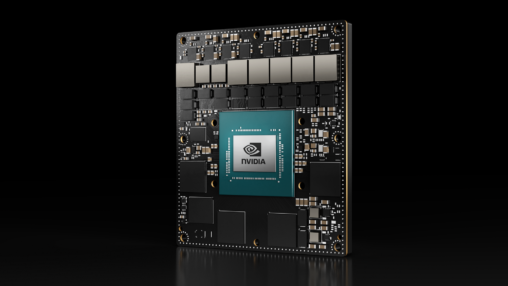
At COMPUTEX 2023, NVIDIA announced the new Jetson AGX Orin Industrial module, which brings the next level of computing to harsh environments. This new module extends the capabilities of the previous-generation NVIDIA Jetson AGX Xavier Industrial and the commercial Jetson AGX Orin modules, by bringing server-class performance to ruggedized systems.

NVIDIA’s Jetson series of modules has always brought an exciting amount of processing power for mobile and edge AI applications—this being their intended use case. The Jetson lineup also includes several developer kits: modules on reference carrier boards in a format quite similar to single board computers. For the sake of simplicity, we’ll even call these boards “SBCs” in the rest of this review. Let’s not dwell on the semantics for too long—if it looks like a duck and quacks like a duck, it probably is a duck.
The SBC we’re taking a look at today is NVIDIA’s new Jetson Orin Nano Developer Kit, which was announced this March at NVIDIA’s GTC 2023 event. The module it’s based on has been around slightly longer but has only just now made it into the SBC format. Designed for rapid prototyping, it brings a powerful set of AI hardware and software in a standalone form factor.

The excitement around Raspberry Pi’s product releases is always massive – their products, shaped by years of community (and top-notch first-party) support are representative of the way a piece of development tech is meant to function. From perfectly stable SBCs with mature OSs to the Raspberry Pi Pico MCU board which has been a community favourite since its 2021 debut, ease-of-use and and a highly polished user experience differentiate the company’s offerings from those of its rivals.
The Raspberry Pi Debug Probe which we’re taking a look at today explains its purpose quite splendidly by name alone: it’s an open-source debug probe providing both an UART and an ARM SWD interface, all at a very attractive $12 price.
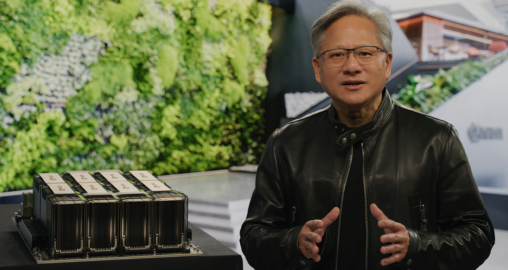
NVIDIA’s GTC 2023 keynote has just ended, with GTC itself ending on March the 23rd – which means an array of exciting new industrial announcements just went live. You can always watch the full keynote at the following link, but we’ve also curated a selection – which you can find in this article – of the most important announcements given during the event.
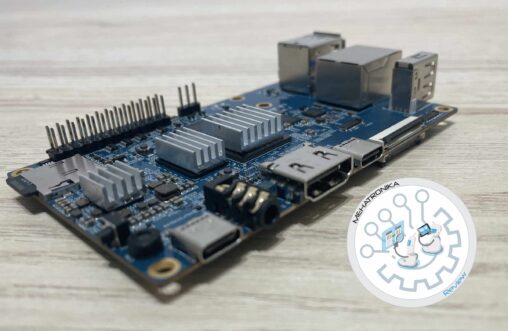
Yet another SBC landed on our review desk. This time around it’s the Orange Pi 5, a recently released RK3588S-based high-end model from Orange Pi – a company whose main products are ARM-based SBCs oriented towards makers. These are the most common type of SBC – with significantly more rare x86-based ones forming the majority of the rest (RISC-V CPUs are also used in single-board computers, rather seldomly, however).

The LattePanda 3 Delta is a gorgeously made Windows 11-capable x86 SBC with great performance and heaps of connectivity options. None of the competing ARM-based systems come quite close, and most of the x86-based systems don’t offer nearly the same level of polish. The $279 asking price is also impressively low, especially with current inflated market prices in mind.
We’ll be direct – don’t skip out on this one!
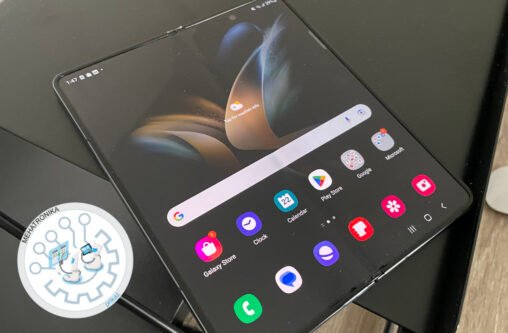
The Galaxy Z Fold 4 is Samsung’s best and latest. It’s their absolute flagship, packing all the tech they’ve got. It’s impressive, and it’s got the highest productivity potential of all the mobiles on the market right now, but its near-$2k price tag puts it in the same ballpark as much more powerful traditional phone-and-laptop combinations.

Miniware makes tiny things. The company specialises in shrinking usually bulky and hefty equipment into tiny pocket-sized gadget while sacrificing the least amount of features. Naturally, this is a tricky feat which requires a good bit of engineering know-how.
Best known in the maker circles for their TS-series soldering irons, Miniware is a company which produces quite the array of products – from tiny portable oscilloscopes and logic analysers to SMD tweezers (our review here) and more. So far we’ve had quite a positive experience with their products, and the general community consensus is similar.
This is why we’ve already got high hopes for the review unit we’ve got in our hands – the MDP-P906 PSU. The manufacturer provided us with the unit free of charge, but does not in any way influence our opinions stated here.
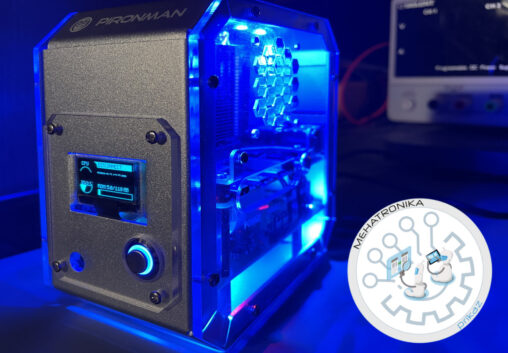
As single board computers progress and become more and more powerful, so does their use as a desktop replacement become ever more viable. We’ve talked about this before – with several companies marketing their products as capable of such feats while accomplishing the task with varying levels of success. We’re not quite there yet (with the exception of some Intel-based SBCs which encroach upon the desktop territory both in performance and price), ARM SoCs are quickly catching up to their x86 siblings and in some high-end cases even surpassing them.
But as technology tends to do, what once was the very summit of our prowess has since slowly trickled down and seeped into inexpensive parts, enabling the advent of many technologies in the consumer field. With that being said, it’s not hard to fathom the incredibly low prices and (relatively) powerful performance modern SBCs bring. Sure, the Raspberry Pi was the trendsetter and before its debut it had been incredibly difficult to obtain any serious “disposable” computational power. Nowadays, however, with so many contenders available, the SBC form factor is a market in its own right.
Despite the fierce competition, the latest entry in Raspberry Pi’s portfolio, dubbed the Pi 4B (our review of it can be found here), remains one of the most powerful and the most popular board on the market. Naturally, a wide array of accessories for the model have popped up, some of which are quite necessary thanks to the Pi’s poor thermal performance. Cases have also been popular from the inception of the SBC as protecting a computer’s guts from dust generally seems like the right idea.
In a market saturated with boards, cooling solutions for the former and boxes to shove the former two into, how do you stand out?

In the last issue we’ve taken a look at two of Würth’s excellent boards designed for the Feather ecosystem – the MagIC3 FeatherWing and the Sensor FeatherWing. Both of these offer great features and ease-of-use for a low price. In our tests, both units delivered exemplary results and demonstrated the flexibility of the format.
Today we’re taking a look at two more Würth boards which were generously provided by the manufacturer – in different form actors, but both based on their own Calypso WiFi module.
The Calypso module itself is a shielded subunit with castellated connectors intended to be used as a complete WiFi subsystem for embedded devices. At the heart of the Calypso lies a networked MCU containing a 802.11 NWP and an ARM M4 core. Additional timing and RF external antenna-driving circuitry is also located under the shield. What truly sets it apart, though, is the ProWare firmware which controls the entire TCP/IP stack and network connectivity.
Calypso’s main goal is completely delegating all connectivity processing from the main MCU or application processor onto its own subsystem, thus freeing up system resources. Compared to most other options which communicate using wide parallel connections and require the main controller to constantly maintain the connection using SDK routines, Calypso uses a simple UART connection and AT commands. This is akin to the way Würth’s sensors handle data – offering pre-processed digital data streams instead of raw values which require additional software calculations and conversion.
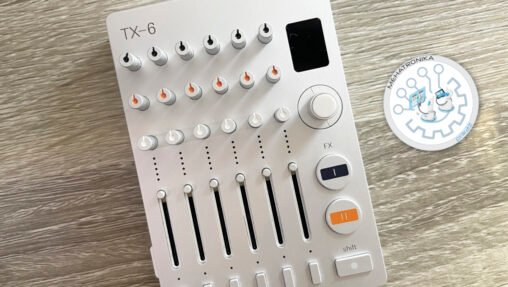
Each time we get a bit of teenage engineering kit, it takes us on a journey during our review. The Swedish company seems to make just about anything they feel like making – which includes everything from serious, albeit quirky music devices – to adorable record cutters and singing dolls. This playful variety is what defines the brand – and what makes the brand. Reviewing their more “serious” products in the past – we’ve still stumbled upon heaps and heaps of personality. It’s certainly interesting and charming to see a brand push out products they truly want to.
This philosophy definitely gave rise to the TX-6 – a tiny battery-powered portable mixer with a bunch more features packed right in. It’s just… a peculiar device which has so much going on under the hood that calling it a “mixer” feels almost wrong – for it is so much more than that.
But a mixer at heart it is! The six stereo channels (which can be also used as up to 12 unbalanced mono channels or 6 balanced mono channels), six channel control strips and a two-slot effect processor define the main workflow of the TX-6. The inputs for these are found along the top edge – spaced incredibly tightly alongside the USB-C port used for charging and digital audio. On the bottom side there are two buttons (which we’ll explore shortly) and three outputs – a main audio out, an auxiliary out for effect loops and a cue out for monitoring. The sides are mostly empty – save for a single white flip-switch and a status LED right next to it. The whole chassis is built out of a solid block of aluminium. It might seem like a vanity-driven choice – but given its size a relatively heavyweight material needed to be used to stop it from flying off the table upon the slightest tug at any of the cables connected to it (faux leather was also put on the back to provide some grip – while it looks visually stunning, rubber feet might have worked a bit better for this). An adorably tiny OLED display wraps the design up – and displays useful data by utilising a clever UI.
Before digging deep into the TX-6 – it’s worth noting once again how tiny this device is – its 9cm by 6.2cm footprint is minuscule. It’s so small and compact that the headphone adapter almost looks like it should be a volume knob (and that’s what we thought it was upon originally seeing the design – not to mention that it’s larger than the actual master volume encoder).
Teenage engineering has generously sent us the TX-6, alongside a set of slimline cables and a matching bag for the mixer. However, all opinions stated here are our own and were not directly influenced by the company. So – without further ado – let’s dig into each major set of features the TX-6 has and see how it performs.

We’ve taken a look at the Raspberry Pi Zero 2 W. We found it to be a great cheap SBC which is seriously feature-packed. For just $15, you get a quad-core A53 CPU, 512 MB of RAM and 2.4 GHz WiFi and Bluetooth 4.2 connectivity. It’s a great deal – and a drop-in replacement for the older generation small-format Pis. All of this netted it a very high 9.3 out of 10 in our review.
The Radxa Zero, which we’re taking a look at today, is a direct competitor in the small-factor SBC market – offering the same footprint as the smallest Raspberry Pi. However, multiple upgrades make it a more attractive, albeit more expensive (in some configurations) offering.
For starters, what’s holding the Zero 2 W back is the RP3A0-AU chip’s integrated 512 MB of RAM. And that’s your lot. While simpler projects might get away with that – good luck running any hosted application on one (it’s a whole another debate on whether running something like that on a Zero is justified, but…)
The Radxa Zero comes in a few different RAM configs, starting from the low-end 512 MB one, and going all the way up to 4 GB. The 2 GB and 4 GB RAM models also come with on-board flash storage, which can go all the way up to 128 GB for the highest-end configuration.
Since there are quite a few configurations of the Radxa Zero – and memory isn’t the only spec differing between them – let’s start with what remains the same across the board – even on the lowest-end configuration.
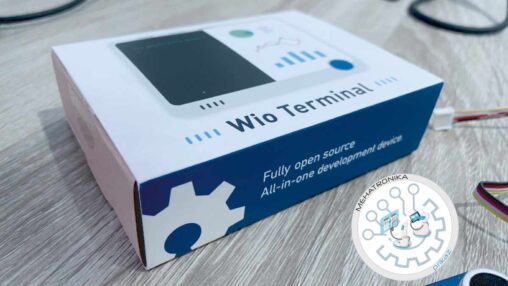
Seeed’s Wio Terminal is an all-in-one contender in the educational development kit market. By interfacing with the real world, these boards allow programs to come to life and enable students to visualise concepts easily. Dev boards are of great appeal to the hobbyist community, as well – enabling makers to create complex devices with minimal involvment in hardware design. These two communities – the education market and the maker space – have been actively utilizing this tech for over a decade now. The ease of use enabled brands like Arduino and Raspberry Pi to gain traction and their almost legendary status in the industry which they have today.
The tools available at any price point continue to evolve rapidly. In the 90s, it would cost millions and take years to build some of the hardware components we mass-produce for pennies nowadays. It simply makes sense that – a decade later – we move on from the classic bare-bones MCU board format and get something more – at least in the price bracket.
See, the price of an Arduino Uno has mostly remained the same – at around $28. It features the beloved ATMega328P, an 8-bit, 20 MHz, with 32K of flash, 2K of RAM and a whole 1K of EEPROM. It’s not a lot – but there’s a suprising amount of things which can be (and have been) done with this chip. The great support and tens of thousands of projects are what draws people towards the Uno – and what’s cemented its rightful place in tech history.

Foldable phones have been all the hype in recent years. Strictly speaking, these are not a new idea. The first concept foldable phone was the Nokia Morph – which never saw a functional prototype developed. In the early 2010s, Samsung and LG – the forerunners of OLED tech – developed functional displays which could handle some bending. While the early-to-mid 2010s were filled with prototype foldable devices, 2018 was the year when the first commercially available foldable hit the market – the Royole FlexPai.
What the FlexPai did was prove to the world that there was a place for a foldable phone in the consumer market – but what it did not achieve was perfection. The screen was fragile and easily damaged, the specs weren’t anything to write home about and the hinge – the lifeblood of any foldable – proved to be a much bigger issue than anticipated.
A hinge is an obvious ingress point for dust and water – so early models often had serious durability issues. Part of the smartphone’s ubiquity lies in the simplicity of its design – no motors, bearings or other mechanical moving parts which can easily break or malfunction. This is exactly why models with pop-out front cameras are traditionally seen as unreliable and why many curious ideas like the LG Wing never entered the mainstream.
While Royole had introduced their first foldable a year before Samsung had its first contender – Samsung’s 2019 Fold was the first true noteworthy device of the sort. Nevertheless, early review units had issues with the protective foil on the screen, as well as numerous reports of gritty hinges. Also, the crease. The crease is simply a part of life for foldable owners. This line naturally occurs on all inwards-bending displays. Samsung engineered their hinges to bend the displays at rather sharp angles (which is good), which sadly does increase the prominence of this line, visible at every angle except a straight-on view of the screen.

